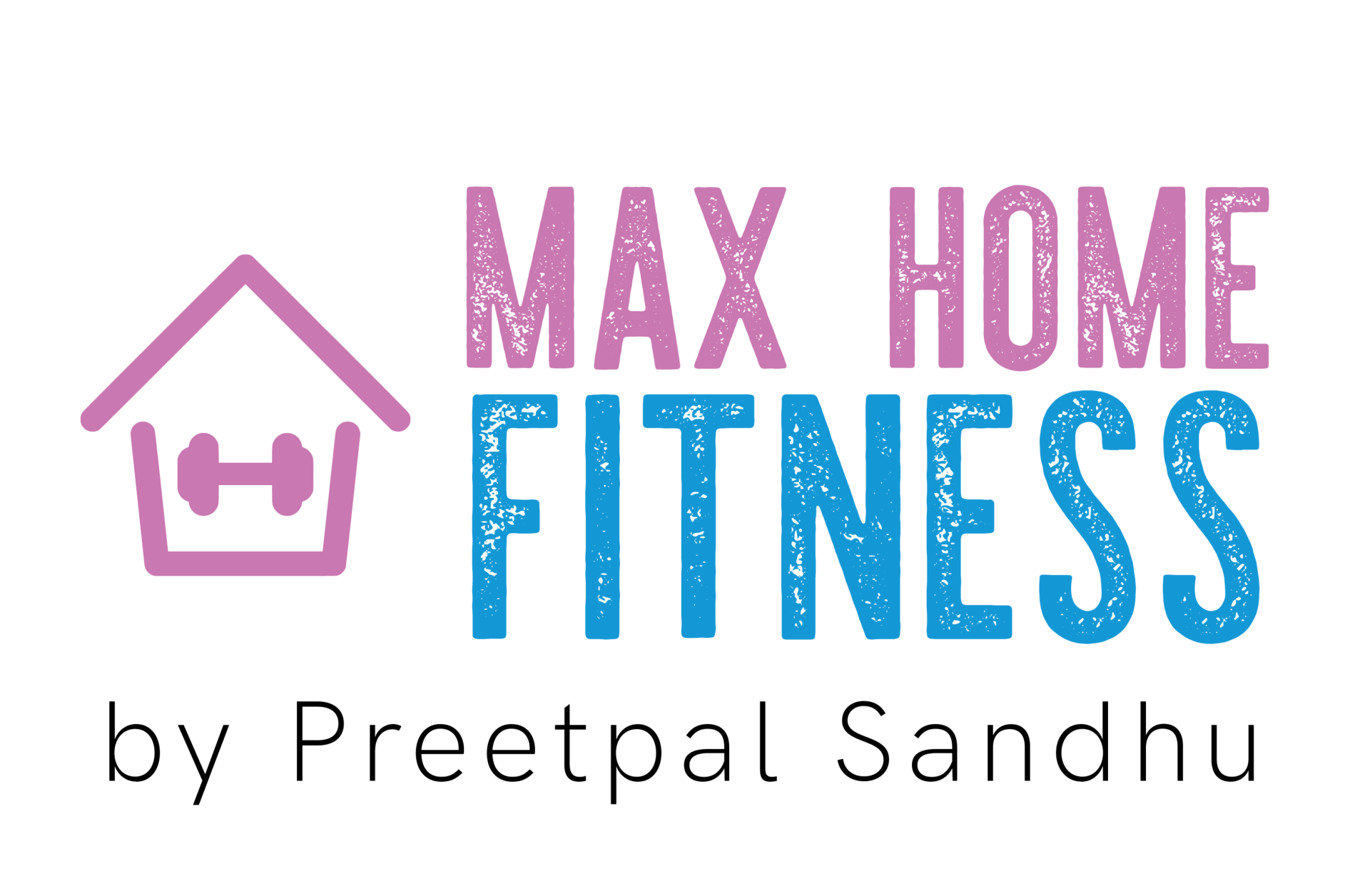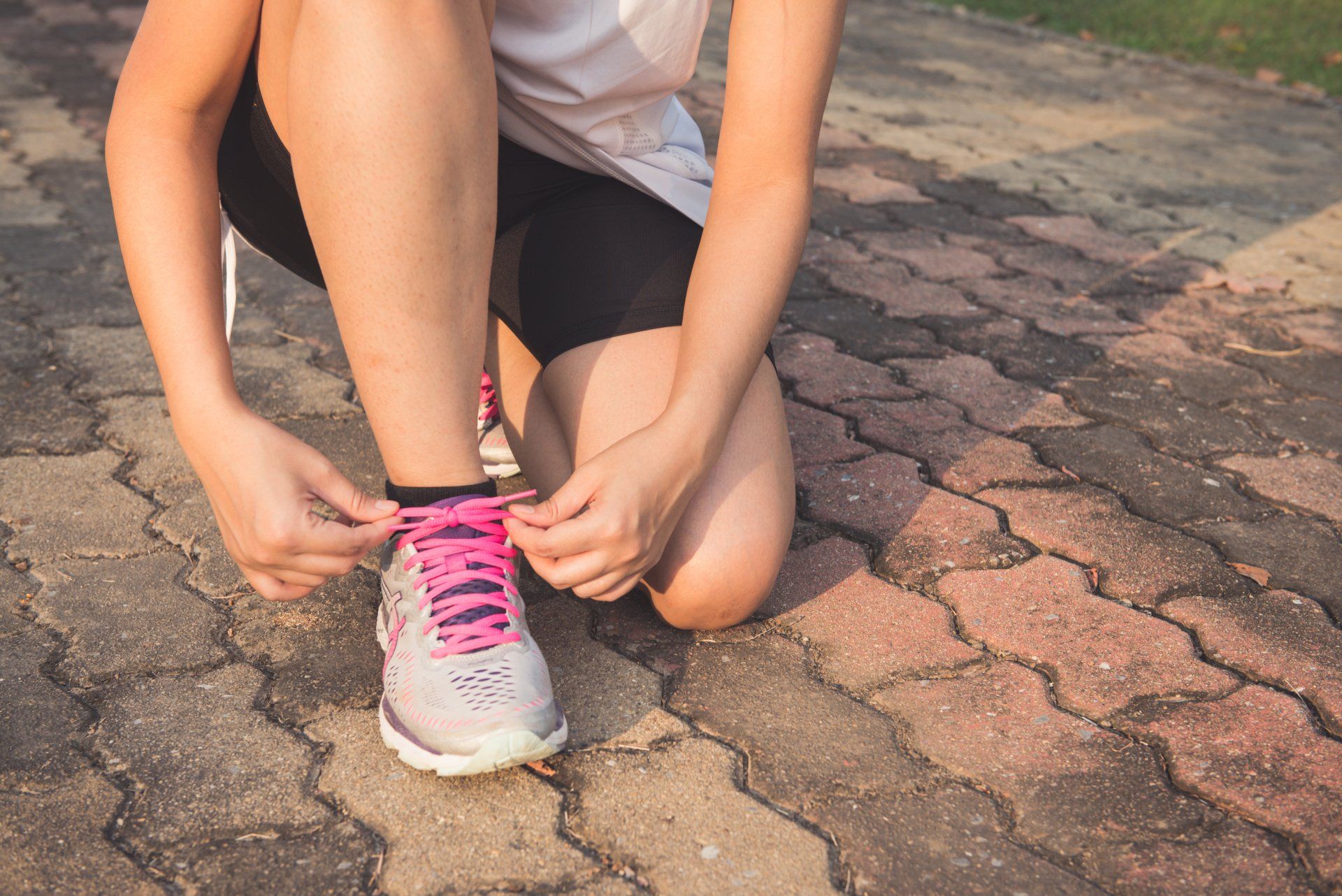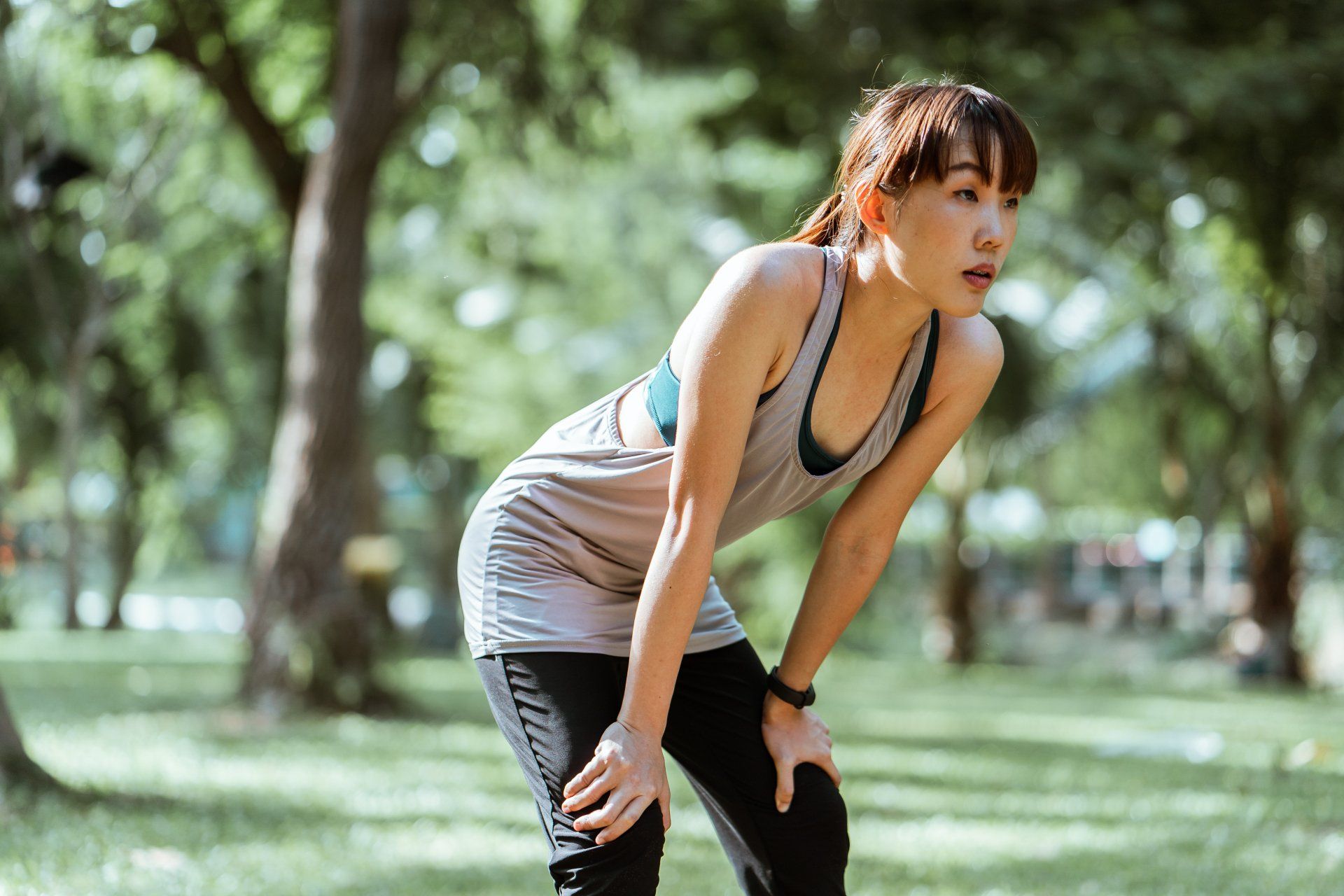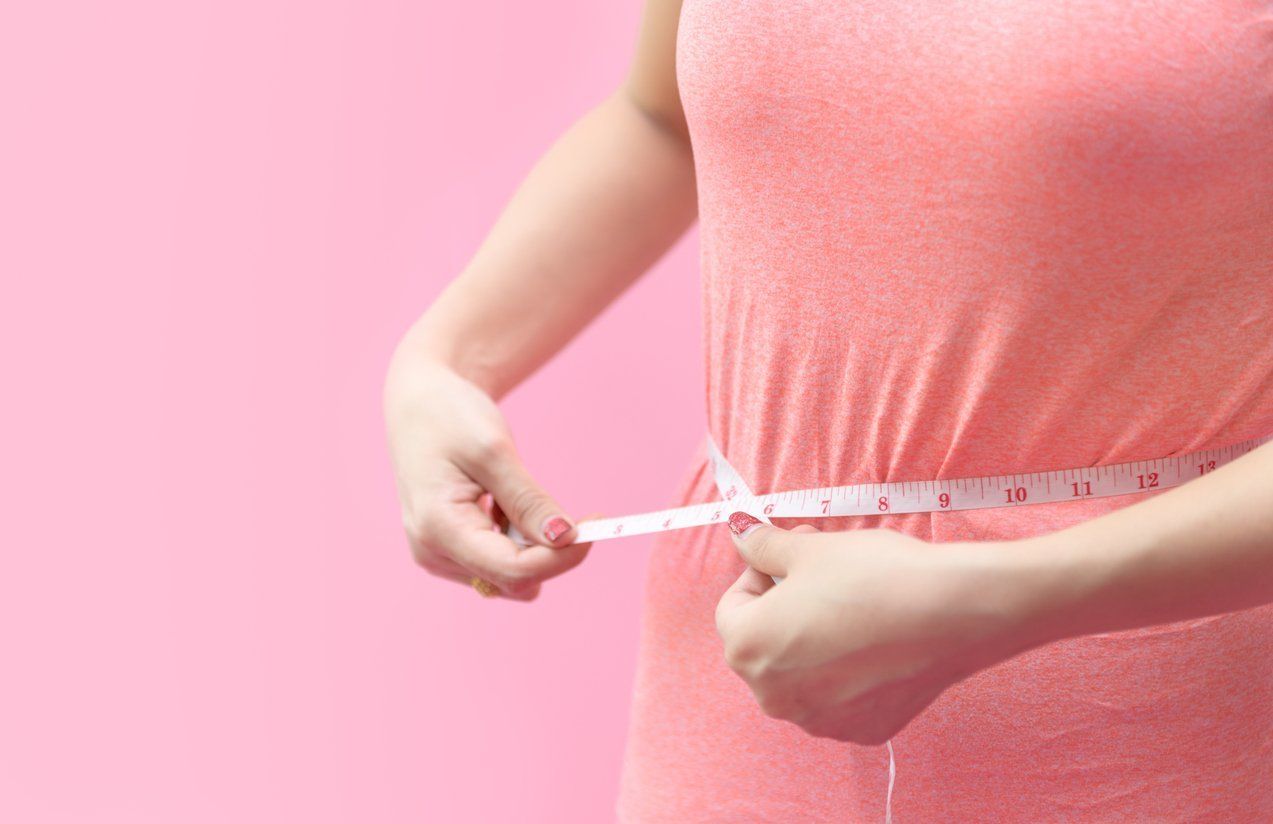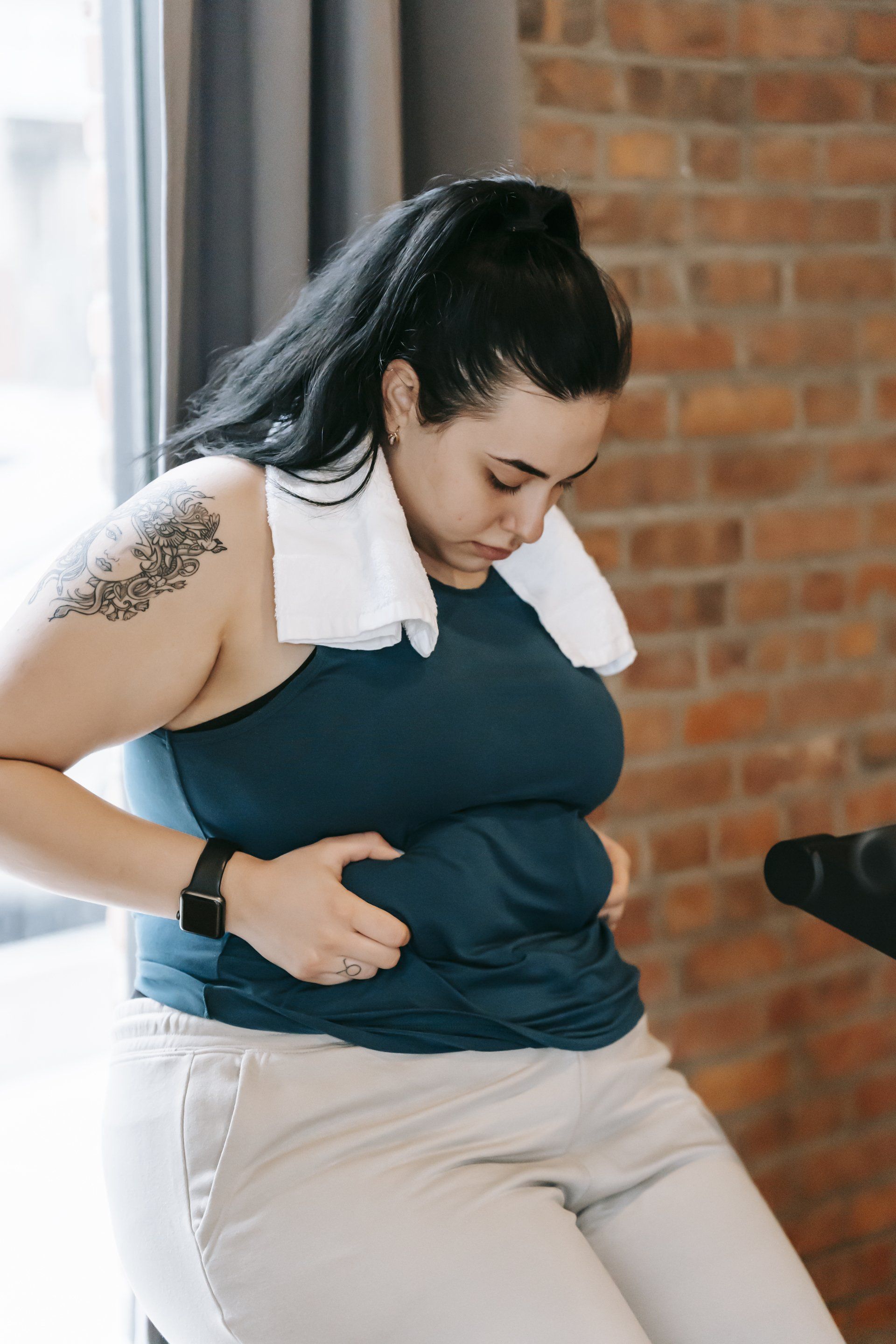The Best Exercises for When You Have Low Energy
Jennifer Purdie • September 8, 2021
The Best Exercises for When You Have Low Energy
Your fitness goals can sometimes get derailed by low energy. If you wake up tired or life's challenges leave you exhausted, your body can't perform physical activity at the level you prefer. One way to combat this lethargy is by performing exercises that don’t require high energy. This is preferable to staying sedentary and risking your already low energy falling even lower.
Although you might feel frustrated when unable to knock out a solid sweat session, low-intensity exercise does offer health benefits, such as the following:
- Improves mood
- Enhances cardiovascular fitness
- Builds endurance
- Reduces blood pressure
Low-Intensity Exercises
When you can’t muster the energy for a moderate- or high-intensity workout, these simple activities can keep you moving and stir up your energy level:
Walking
Workout: Walk for 30 minutes at a pace of 2.0 to 2.9 miles per hour
As one of the most popular forms of exercise, walking requires no equipment other than a comfortable pair of walking shoes, and you can do it almost anywhere—helpful for when energy is low and you don’t want to make any extra effort to work out.
Walking can transform your low energy level as this exercise boosts vitality by releasing hormones similar to endorphins in the body. You also won’t exert excessive strain on joints if you stick to walking at a normal pace (around 2.5 miles per hour), such as you would with higher impact sports,
Yoga
Workout: 30-minute vinyasa routine with four poses: plank; knees, chest, and chin; cobra; and downward-facing dog
Yoga is often studied for its ability to induce a balanced mental state and improve sleep quality.3 When your energy is low, performing a simple yoga routine can help provide
such therapeutic effects.
Vinyasa yoga is a flow routine in which poses tend to move from one to another, rather than one pose at a time with a rest in between. Poses in vinyasa are typically sun salutations, known to boost energy level because they increase your resting metabolic rate.
To begin a simple vinyasa yoga routine when energy is low, try these beginner poses in this order:
1. Plank:
To start the plank position, jump to the back of your mat and lie face down with your forearms and toes on the floor. Lift up your chest, legs, and torso while driving your feet and hands into the mat. Keep your shoulders over your wrists and hips straight with your shoulders. Hold for up to 30 seconds and then lower.
2. Knees, Chest, and Chin:
As you breathe out, lower your knees, chest, and chin to your mat. Keep your glutes up in the air and your elbows straight along your side. Breathe in and out for 30 seconds.
3. Cobra:
To get into the cobra pose, slide forward on the mat and lower your hips to the floor. Raise your chest toward the sky with as much strength as you can, pushing from your back (not into your hands). Anchor your pelvis and the top of your feet to the mat.
4. Downward Facing Dog:
To begin downward-facing dog, breathe out, jump to the back of your mat, and push your feet into the mat as you straighten your arms and lift your hips up. In this pose, your hands should be shoulder-width apart and your toes curled under you as you straighten your arms. Keep your spine long; press your sitting bones towards the sky and heels toward the floor.
Tai Chi
Workout: 30- to 45-minutes of Tai Chi movements
Tai Chi is a low-impact exercise in which you perform slow movements named after animal
actions or martial arts moves (such as White Crane Flashes Its Wings), and is a perfect workout alternative when energy is low.
As you move through a Tai Chi workout, you use deep breaths in and out, focusing on your body sensations.5 The movements are circular; they don’t extend or bend joints and they use relaxed muscles rather than tightened ones like you would in more high-intensity workouts.
To begin a Tai Chi workout, warm up with shoulder circles, rocking back and forth to loosen your muscles. Then move into short-form Tai Chi, these are smaller, slower movements and good for beginners.
Light Swimming and Walking in a Pool
Workout: Swim two lengths of the pool to warm up. Walk the length of the pool for 10 minutes. Swim for 10 minutes. Cooldown by swimming two slow lengths of the pool.
Swimming can improve mood and mental health in both men and women, and people report enjoying water-based exercise more than exercising on land. Also, when your energy is low, you might not able to last long when working out. But in water, you can often exercise longer than on land without any extra effort on your joints or muscles.
For safe swimming, the CDC recommends that you shower before you get in the water—even if for only one minute to rinse your body. This removes any dirt on your body, which allows the chlorine to kill germs instead (a better use for it). When open water swimming, look for cloudy water, which could indicate more germs are in the water than normal. If this is the case, you might want to switch to a chlorinated pool.
Rowing Machine
Workout: 30 minutes at 22 strokes per minute
Rowing is an excellent low-impact activity that doesn't put extra stress on your joints. You
can also control your pace, energy level, and output.
According to a study from the Journal of Human Kinetics, you can row even with low energy. Researchers found that trained rowers could maintain a 2,000-meter rowing performance following three high-load training sessions throughout a three-day period. These rowers suffered muscle damage, soreness, and significant loss of strength and power, but could still row because of how low impact the exercise was on any joints.
Workout Tips When You Have Low Energy
Measure Your Heart Rate
Low-intensity and low-impact activity get you to about 40 to 50 percent of your maximum heart rate. To find your maximum heart rate, you can subtract from 220 from your age. For example, for a 50-year-old person, the estimated maximum age-related heart rate would be calculated as 220 – 50 years = 170 beats per minute (bpm).
Hydrate
Your low energy could be linked to inadequate hydration, according to a study from the journal Sleep. Researchers found that adults who slept only six hours had a worse hydration status than adults who slept the recommended eight hours. So, be sure to drink water and get eight hours of sleep to prevent low energy levels.
Try 30 Minutes of Steady-State Exercise
In a study on high-intensity interval training versus steady-state training of 30 minutes, researchers found that 30 minutes of steady-state exercise can provide an enjoyable workout and still allow for increases in VO2max ( the number that describes your cardiorespiratory fitness).
Use the Rate of Perceived Exertion
The CDC says that the Borg Rating of Perceived Exertion (RPE) measures your physical activity
intensity level.14 You can use this RPE when exercising with low energy by paying attention to your physical sensations, such as your heart and breathing rate, how much you’re sweating, and if you experience any muscle fatigue. Then on a scale of 6 to 20, rank yourself on your perceived exertion. For low-intensity workouts, you should score between eight and 11.
A Word from Very well
Some days you lack energy due to any number of reasons: lack of sleep, extra stress in your life, or you hit your workout extra hard a day or two before. Although a low energy level can feel frustrating, this is normal and you need to listen to your body by taking it easy on your workout. If your energy remains low for a long period of time, consider speaking with a health care professional.
Credit Source: www.verywellfit.com
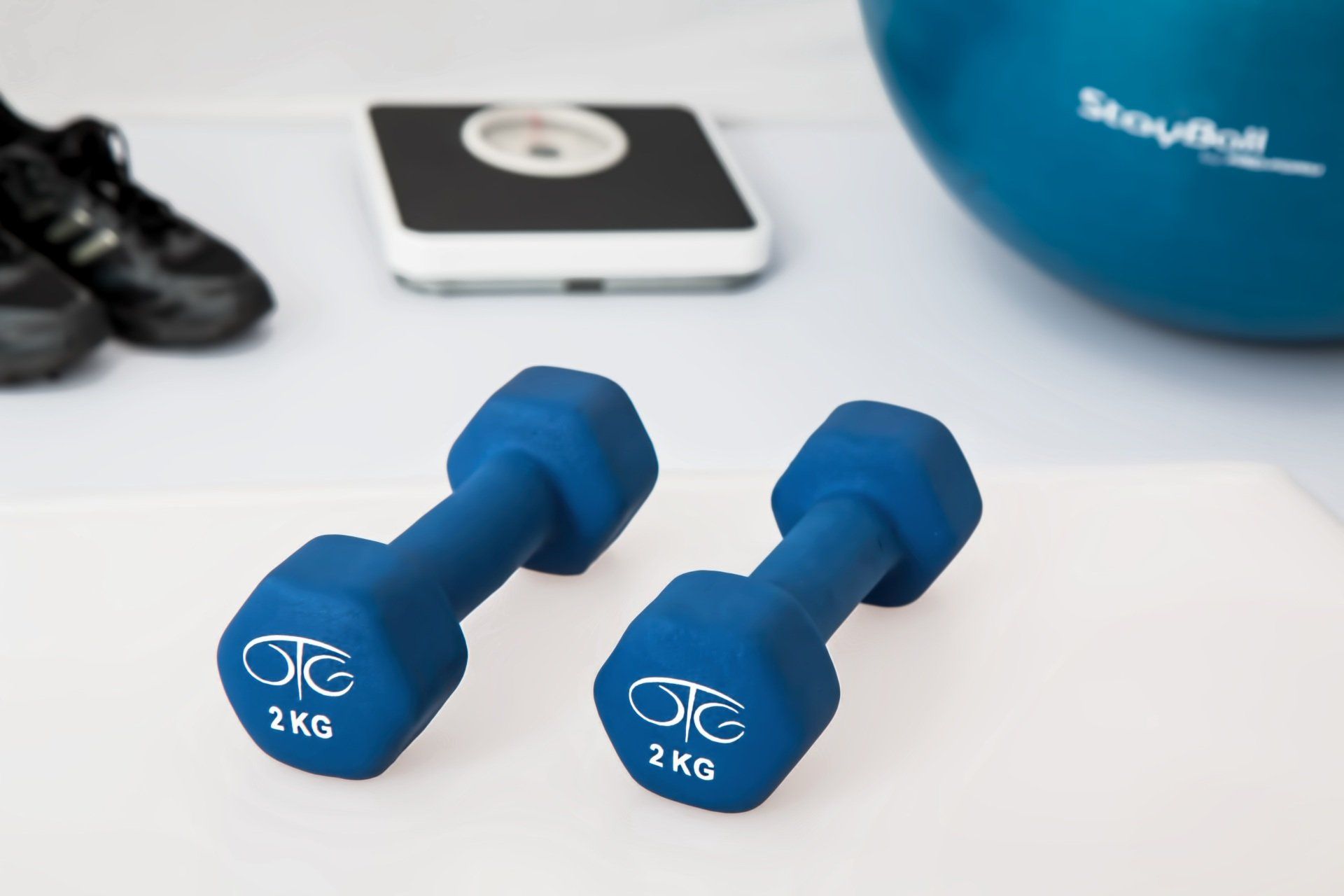
In today's fast-paced world, finding time to hit the gym or engage in outdoor activities can be challenging. However, staying fit and healthy doesn't have to be complicated or require expensive equipment. With the convenience of exercising at home, you can achieve your fitness goals without leaving your comfort zone. In this blog, we'll explore five top exercises that will help you get fitter right in the comfort of your own home. High-Intensity Interval Training (HIIT): HIIT workouts are incredibly effective for improving cardiovascular fitness and burning calories in a short amount of time. The beauty of HIIT is that it can be customized to suit your fitness level. Choose exercises such as burpees, jumping jacks, mountain climbers, or squat jumps, and perform them at maximum intensity for 30 seconds, followed by a 10-15 second rest. Repeat this cycle for 15-20 minutes, and you'll experience an intense full-body workout that boosts your metabolism and improves endurance. Bodyweight Strength Training: Strength training is crucial for building lean muscle mass, improving bone density, and increasing overall strength. You can achieve significant results using your own body weight as resistance. Classic exercises like push-ups, squats, lunges, planks, and tricep dips can be performed at home with no equipment. Aim for three sets of 12-15 repetitions for each exercise, gradually increasing the intensity as you progress. To add variety, consider incorporating variations like diamond push-ups, pistol squats, or single-leg glute bridges. Yoga: Yoga not only improves flexibility but also enhances mental well-being. With numerous online resources and apps offering guided yoga sessions, you can easily practice yoga at home. Set aside 20-30 minutes each day for a yoga routine that includes poses like downward dog, warrior, tree pose, and child's pose. Yoga helps strengthen your core, improves balance, reduces stress, and promotes relaxation. Incorporating a regular yoga practice into your fitness routine will bring both physical and mental benefits. Skipping Rope: Skipping rope might seem like a childhood pastime, but it's a fantastic cardiovascular exercise that burns calories and improves coordination. All you need is a sturdy skipping rope and enough space to jump. Start with a warm-up and then jump rope for 1-2 minutes, followed by a short rest period. Repeat this cycle for 10-15 minutes. As you progress, try incorporating different jump variations, such as high knees, double unders, or cross-overs. Skipping rope is an excellent option for a quick and effective workout that can be done anywhere in your home. Cardio Dance Workouts: If you enjoy dancing, cardio dance workouts are a fun way to get your heart pumping while improving coordination and endurance. Numerous online platforms offer dance fitness routines that cater to various styles and skill levels. Choose a dance style that interests you, such as Zumba, hip-hop, or salsa, and follow along with the instructor. These workouts not only provide a fantastic cardio session but also uplift your mood and make exercise enjoyable. Conclusion: Getting fitter at home is both achievable and convenient. By incorporating these top five exercises into your routine, you can build strength, improve cardiovascular fitness, enhance flexibility, and boost your overall well-being. Remember to start at your own pace, gradually increasing the intensity as you progress. With commitment and consistency, your home can become your personal fitness sanctuary, bringing you closer to your health and fitness goals. So, lace up your shoes, roll out your yoga mat, and let's get fitter right at home!
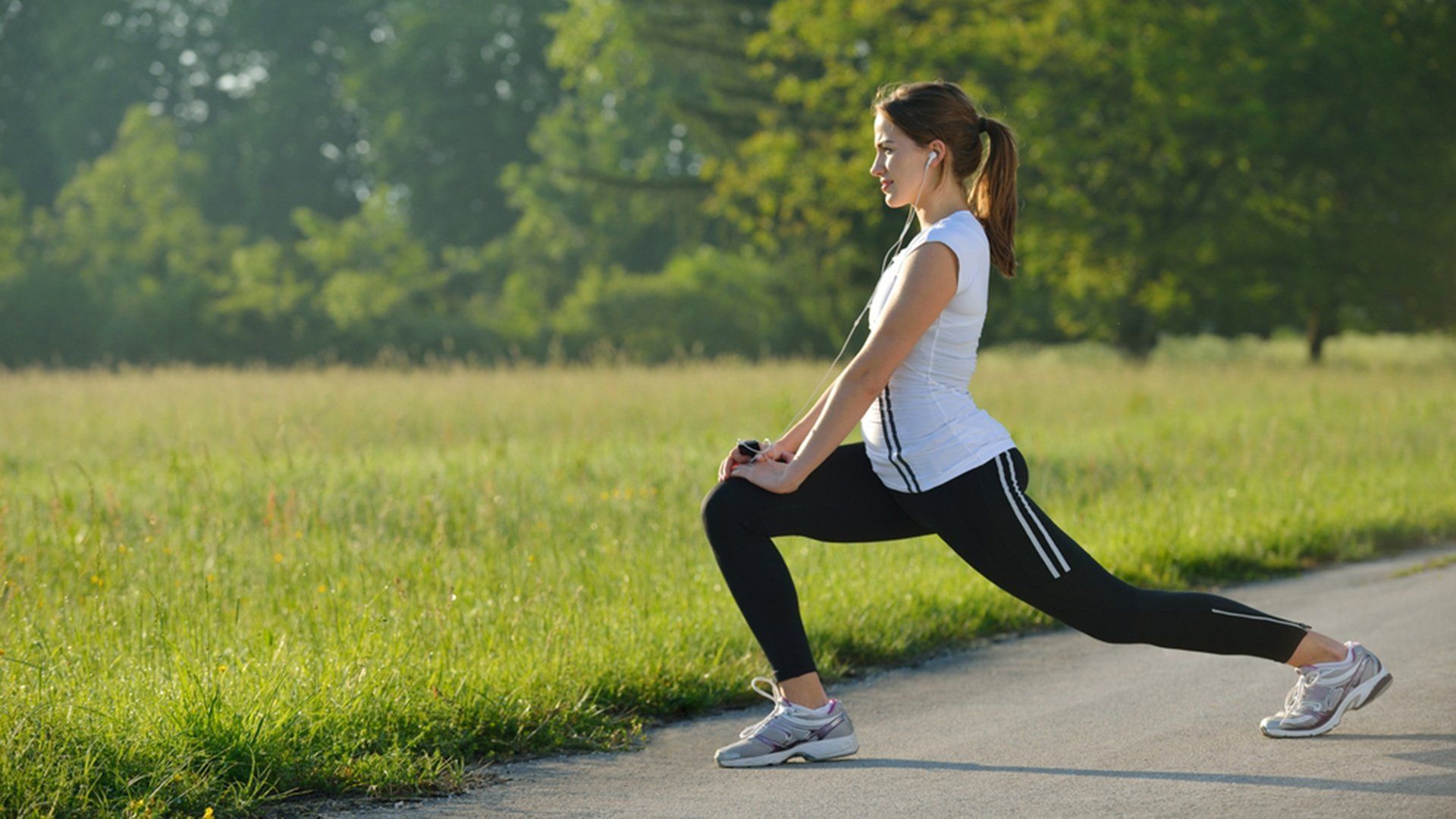
Exercise is defined as any movement that makes your muscles work and requires your body to burn calories. There are many types of physical activity, including swimming, running, jogging, walking, and dancing, to name a few. Being active has been shown to have many health benefits, both physically and mentally. It may even help you live longer. Here are the top 8 ways regular exercise benefits your body and brain. 1. It can makes you feel happier Exercise has been shown to improve your mood and decrease feelings of depression, anxiety, and stress. It produces changes in the parts of the brain that regulate stress and anxiety. It can also increase brain sensitivity for the hormones serotonin and norepinephrine, which relieve feelings of depression. Additionally, exercise can increase the production of endorphins, which are known to help produce positive feelings and reduce the perception of pain. Furthermore, exercise has been shown to reduce stress and improve symptoms of anxiety. Interestingly, it doesn’t matter how intense your workout is. It seems that your mood can benefit from exercise no matter the intensity of the physical activity. The effects of exercise on mood are so powerful that choosing to exercise (or not) even makes a difference over short periods. Active people who stopped exercising regularly experienced significant increases in symptoms of depression and anxiety, even after only a few weeks. 2. It can helps with weight loss Inactivity is a major factor in weight gain and obesity. To understand the effect of exercise on weight reduction, it is important to understand the relationship between exercise and energy expenditure. Your body spends energy in three ways: digesting food exercising maintaining body functions like your heartbeat and breathing While dieting, a reduced calorie intake will lower your metabolic rate, which can delay weight loss . On the contrary, regular exercise has been shown to increase your metabolic rate, which can burn more calories to help you lose weight. Combining aerobic exercise with resistance training can maximize fat loss and muscle mass maintenance, which is essential for keeping the weight off. 3. It is good for your muscles and bones Exercise plays a vital role in building and maintaining strong muscles and bones. Activities like weightlifting can stimulate muscle building when paired with adequate protein intake. This is because exercise helps release hormones that promote the ability of your muscles to absorb amino acids. This helps them grow and reduces their breakdown. As people age, they tend to lose muscle mass and function, which can lead to an increased risk of injury. Practicing regular physical activity is essential to reducing muscle loss and maintaining strength as you age. Also, exercise helps build bone density when you’re younger, in addition to helping prevent osteoporosis later in life. Interestingly, some research suggests that high impact exercise, such as gymnastics or running, or odd impact sports, such as soccer and basketball, may help promote a higher bone density than non-impact sports like swimming and cycling. SUMMARY Physical activity helps you build muscles and strong bones. It may also help prevent osteoporosis. 4. It can increases your energy level Exercise can be a real energy booster for many people, including those with various medical conditions. 6 weeks of regular exercise reduced feelings of fatigue for 36 people who had reported persistent fatigue. Furthermore, exercise can significantly increase energy levels for people with chronic fatigue syndrome (CFS) and other serious illnesses. In fact, exercise seems to be more effective at combating CFS than other treatments, including passive therapies like relaxation and stretching or no treatment at all. Additionally, exercise has been shown to increase energy levels in people with other conditions like cancer. SUMMARY Engaging in regular physical activity can increase your energy levels. This is true even in people with persistent fatigue and those with serious health conditions. 5. It can reduces your risk of chronic disease Lack of regular physical activity is a primary cause of chronic disease. Regular exercise has been shown to improve insulin sensitivity, heart health, and body composition. It can also decrease blood pressure and cholesterol levels. In contrast, a lack of regular exercise — even in the short term — can lead to significant increases in belly fat, which may increase the risk of type 2 diabetes and heart disease. That’s why regular physical activity is recommended to reduce belly fat and decrease the risk of developing these conditions. SUMMARY Daily physical activity is essential to maintaining a healthy weight and reducing the risk of chronic disease. 6. It can helps skin health Your skin can be affected by the amount of oxidative stress in your body. Oxidative stress occurs when the body’s antioxidant defenses cannot completely repair the cell damage caused by compounds known as free radicals. This can damage the structure of the cells and negatively impact your skin. Even though intense and exhaustive physical activity can contribute to oxidative damage, regular moderate exercise can actually increase your body’s production of natural antioxidants, which help protect cells. In the same way, exercise can stimulate blood flow and induce skin cell adaptations that can help delay the appearance of skin aging. SUMMARY Moderate exercise can provide antioxidant protection and promote blood flow, which can protect your skin and delay signs of aging. 7. It can helps your brain health and memory Exercise can improve brain function and protect memory and thinking skills. To begin with, it increases your heart rate, which promotes the flow of blood and oxygen to your brain. It can also stimulate the production of hormones that enhance the growth of brain cells. Plus, the ability of exercise to prevent chronic disease can translate into benefits for your brain, since its function can be affected by these diseases. Regular physical activity is especially important in older adults since aging — combined with oxidative stress and inflammation — promotes changes in brain structure and function. Exercise has been shown to cause the hippocampus, a part of the brain that’s vital for memory and learning, to grow in size, which may help improve mental function in older adults. Lastly, exercise has been shown to reduce changes in the brain that can contribute to conditions like Alzheimer’s disease and schizophrenia. SUMMARY Regular exercise improves blood flow to the brain and helps brain health and memory. Among older adults, it can help protect mental function. 8. It can helps with relaxation and sleep quality Regular exercise can help you relax and sleep better. With regard to sleep quality, the energy depletion that occurs during exercise stimulates recuperative processes during sleep. Moreover, the increase in body temperature that occurs during exercise is thought to improve sleep quality by helping it drop during sleep. One review of six studies found that participating in an exercise training program helped improve self-reported sleep quality and reduced sleep latency, which is the amount of time it takes to fall asleep. Another older study showed that 16 weeks of physical activity improved sleep quality and helped 17 people with insomnia sleep longer and more deeply than the control group. It also helped them feel more energized during the day. What’s more, engaging in regular exercise seems to be beneficial for older adults, who are often affected by sleep disorders. You can be flexible with the kind of exercise you choose. It appears that either aerobic exercise alone or aerobic exercise combined with resistance training can both improve sleep quality. SUMMARY Regular physical activity, regardless of whether it is aerobic or a combination of aerobic and resistance training, can help you sleep better and feel more energized during the day. Credit Source: www.healthline.com
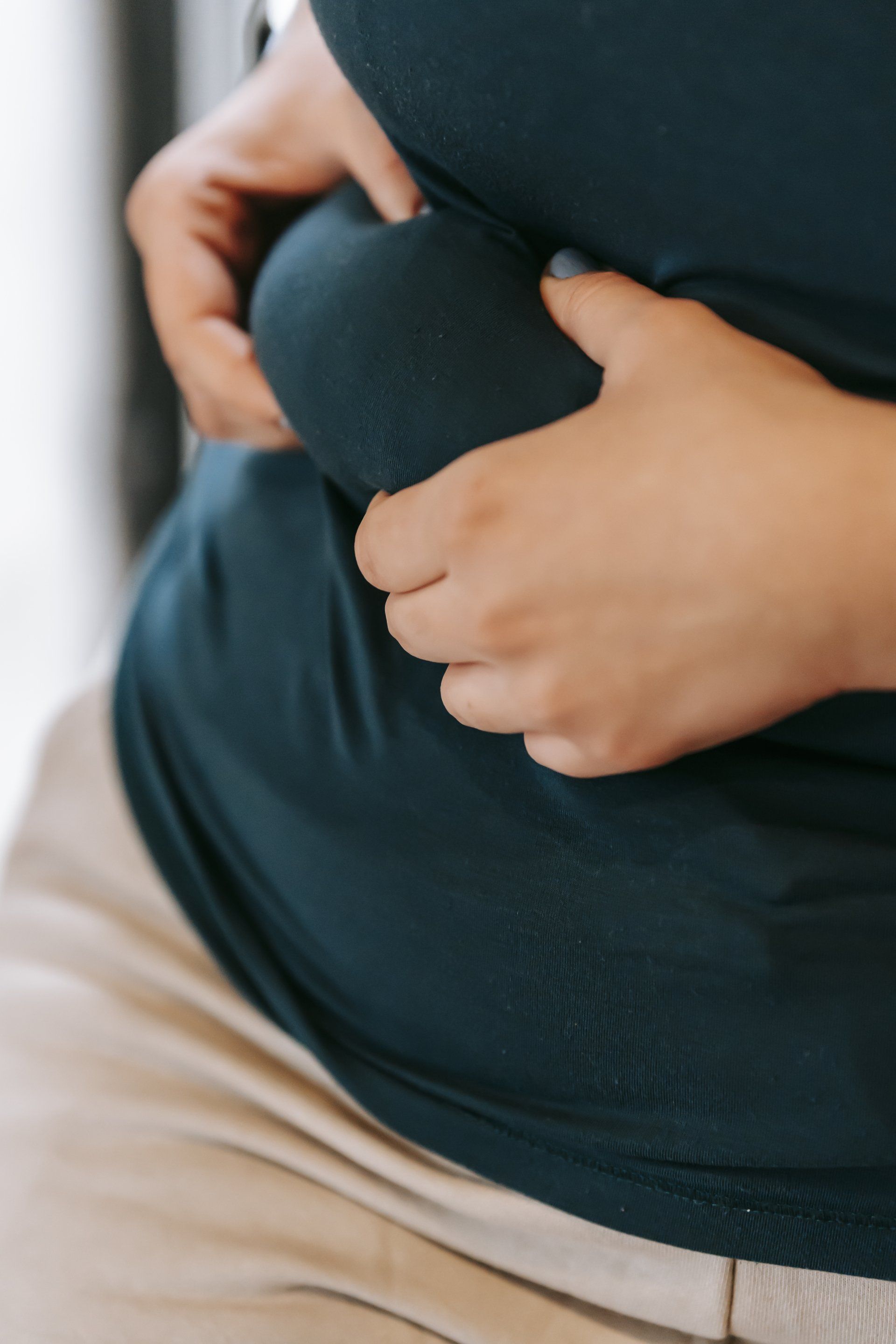
We include products we think are useful for our readers. If you buy through links on this page, we may earn a small commission. Here’s our process. There is a lot of bad weight loss information on the internet. Much of what is recommended is questionable at best, and not based on any actual science. However, there are several natural methods that have actually been proven to work. Here are 20 easy ways to lose weight naturally. 1. Add Protein to Your Diet When it comes to weight loss, protein is the king of nutrients. Your body burns calories when digesting and metabolizing the protein you eat, so a high-protein diet can boost metabolism by up to 80–100 calories per day. A high-protein diet can also make you feel more full and reduce your appetite. In fact, some studies show that people eat over 400 fewer calories per day on a high-protein diet. Even something as simple as eating a high-protein breakfast (like eggs) can have a powerful effect. 2. Eat Whole, Single-Ingredient Foods One of the best things you can do to become healthier is to base your diet on whole, single-ingredient foods. By doing this, you eliminate the vast majority of added sugar, added fat and processed food. Most whole foods are naturally very filling, making it a lot easier to keep within healthy calorie limits. Furthermore, eating whole foods also provides your body with the many essential nutrients that it needs to function properly. Weight loss often follows as a natural side effect of eating whole foods. 3. Avoid Processed Foods Processed foods are usually high in added sugars, added fats and calories. What’s more, processed foods are engineered to make you eat as much as possible. They are much more likely to cause addictive-like eating than unprocessed foods. 4. Stock Up on Healthy Foods and Snacks Food you keep at home greatly affects weight and eating behavior. By always having healthy food available, you reduce the chances of you or other family members eating unhealthy. There are also many healthy and natural snacks that are easy to prepare and take with you on the go. These include yogurt, whole fruit, nuts, carrots, and hard-boiled eggs. 5. Limit Your Intake of Added Sugar Eating a lot of added sugar is linked with some of the world’s leading diseases, including heart disease, type 2 diabetes and cancer. Since sugar goes by many names in ingredient lists, it can be very difficult to figure out how much sugar a product actually contains. Minimizing your intake of added sugar is a great way to improve your diet. 6. Drink Water There is actually truth to the claim that drinking water can help with weight loss. Drinking 0.5 liters (17 oz) of water may increase the calories you burn by 24–30% for an hour afterward. Drinking water before meals may also lead to reduced calorie intake, especially for middle-aged and older people. Water is particularly good for weight loss when it replaces other beverages that are high in calories and sugar. 7. Avoid Liquid Calories Liquid calories come from beverages like sugary soft drinks, fruit juices, chocolate milk and energy drinks. These drinks are bad for health in several ways, including an increased risk of obesity. A drastic 60% increase in the risk of obesity among children, for each daily serving of a sugar-sweetened beverage. It’s also important to note that your brain does not register liquid calories the same way it does solid calories, so you end up adding these calories on top of everything else that you eat. 8. Limit Your Intake of Refined Carbs Refined carbs are carbs that have had most of their beneficial nutrients and fiber removed. The refining process leaves nothing but easily digested carbs, which can increase the risk of overeating and disease. The main dietary sources of refined carbs are white flour, white bread, white rice, sodas, pastries, snacks, sweets, pasta, breakfast cereals, and added sugar. 9. Fast Intermittently Intermittent fasting is an eating pattern that cycles between periods of fasting and eating. There are a few different ways to do intermittent fasting, including the 5:2 diet, the 16:8 method and the eat-stop-eat method. Generally, these methods make you eat fewer calories overall, without having to consciously restrict calories during the eating periods. This should lead to weight loss, as well as numerous other health benefits. 10. Eat More Fruits and Vegetables Fruits and vegetables are extremely healthy, weight-loss-friendly foods. In addition to being high in water, nutrients and fiber, they usually have very low energy density. This makes it possible to eat large servings without consuming too many calories. Numerous studies have shown that people who eat more fruits and vegetables tend to weigh less. 11. Count Calories Once in a While Being aware of what you’re eating is very helpful when trying to lose weight. There are several effective ways to do this, including counting calories, keeping a food diary or taking pictures of what you eat. Using an app or another electronic tool may be even more beneficial than writing in a food diary. 12. Use Smaller Plates Using smaller plates helps you eat less, because it changes how you see portion sizes. People seem to fill their plates the same, regardless of plate size, so they end up putting more food on larger plates than smaller ones. Using smaller plates reduces how much food you eat, while giving you the perception of having eaten more. 13. Try a Low-Carb Diet That low-carb diets are very effective for weight loss. Limiting carbs and eating more fat and protein reduces your appetite and helps you eat fewer calories. This can result in weight loss that is up to 3 times greater than that from a standard low-fat diet. A low-carb diet can also improve many risk factors for disease. 14. Eat More Slowly If you eat too fast, you may eat way too many calories before your body even realizes that you are full. Faster eaters are much more likely to become obese, compared to those who eat more slowly. Chewing more slowly may help you eat fewer calories and increase the production of hormones that are linked to weight loss. 15. Add Eggs to Your Diet Eggs are the ultimate weight loss food. They are cheap, low in calories, high in protein and loaded with all sorts of nutrients. High-protein foods have been shown to reduce appetite and increase fullness, compared to foods that contain less protein. Furthermore, eating eggs for breakfast may cause up to 65% greater weight loss over 8 weeks, compared to eating bagels for breakfast. It may also help you eat fewer calories throughout the rest of the day. 16. Spice Up Your Meals Chili peppers and jalapenos contain a compound called capsaicin, which may boost metabolism and increase the burning of fat. Capsaicin may also reduce appetite and calorie intake. 17. Take Probiotics Probiotics are live bacteria that have health benefits when eaten. They can improve digestive health and heart health, and may even help with with weight loss. Overweight and obese people tend to have different gut bacteria than normal-weight people, which may influence weight. Probiotics may help regulate the healthy gut bacteria. They may also block the absorption of dietary fat, while reducing appetite and inflammation. Of all the probiotic bacteria, Lactobacillus gasseri shows the most promising effects on weight loss. 18. Get Enough Sleep Getting enough sleep is incredibly important for weight loss, as well as to prevent future weight gain. Sleep-deprived people are up to 55% more likely to become obese, compared to those who get enough sleep. This number is even higher for children. This is partly because sleep deprivation disrupts the daily fluctuations in appetite hormones, leading to poor appetite regulation. 19. Eat More Fiber Fiber-rich foods may help with weight loss. Foods that contain water-soluble fiber may be especially helpful, since this type of fiber can help increase the feeling of fullness. Fiber may delay stomach emptying, make the stomach expand and promote the release of satiety hormones. Ultimately, this makes us eat less naturally, without having to think about it. Furthermore, many types of fiber can feed the friendly gut bacteria. Healthy gut bacteria have been linked with a reduced risk of obesity. Just make sure to increase your fiber intake gradually to avoid abdominal discomfort, such as bloating, cramps and diarrhea. 20. Combat Your Food Addiction Food addiction involves overpowering cravings and changes in your brain chemistry that make it harder to resist eating certain foods. This is a major cause of overeating for many people, and affects a significant percentage of the population. In fact, a recent 2014 almost 20% of people fulfilled the criteria for food addiction. Some foods are much more likely to cause symptoms of addiction than others. This includes highly processed junk foods that are high in sugar, fat or both. The best way to beat food addiction is to seek help. Credit Source: www.healthline.com







